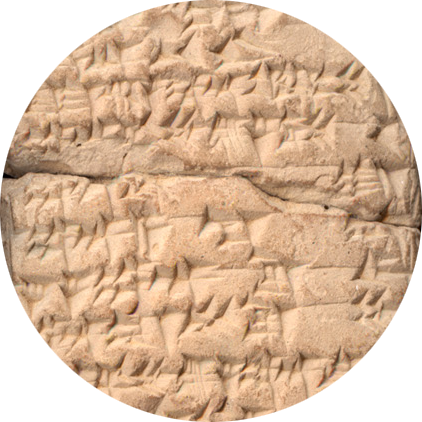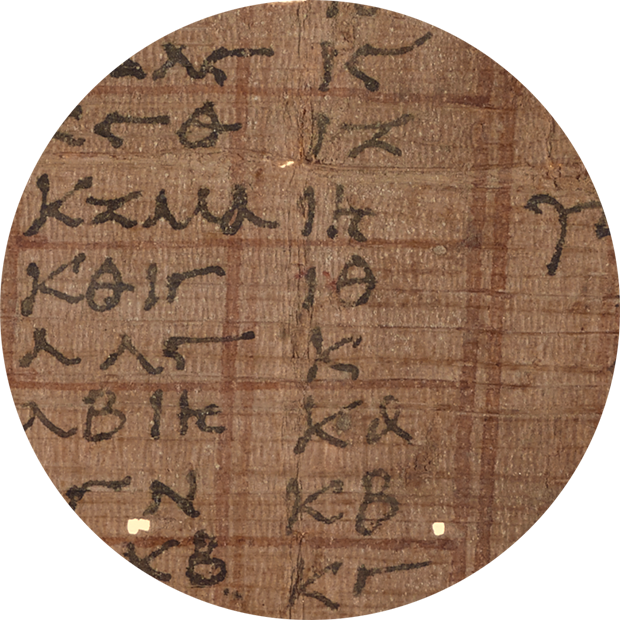Babylonia
ca. 1000 BCE Enūma Anu Enlil.
ca. 1000 BCE MUL.APIN.
For ancient people all over the world the sky was an integral part of their natural environment. This led to a widespread familiarity with the night sky and the recognition of cycles of the behavior of celestial bodies. Changes in the night sky were connected to life on earth through the development of calendars which linked the cycles of the sun, moon, and stars to both civil life, for example through farming seasons, and religion through the performance of rituals on specific dates during the month or year. In addition, the night sky provided phenomena which could be interpreted through systems of astrology to predict the future and understand the past and present.

Mesopotamian astronomy has been of key importance for the development of western and Islamic astronomy as many concepts we still use (form the zodiac signs to the 360 degree division of the circle used to measures angles) derive from them. The earliest written texts known from Mesopotamia attest to knowledge of the cycles of the sun and moon in the form of a calendar with months which began with the first appearance of the new moon crescent and the addition of an extra thirteenth month in certain years in order to keep the calendar in line with the seasons. From the early second millennium BCE we have Babylonian cuneiform texts containing omens drawn from the appearance of celestial phenomena including eclipses and texts containing simple numerical schemes for the variation in the length of day and night over the seasons, as well as evidence for a well-established tradition of the star and constellation names. These traditions were further developed in two standard texts written either towards the end of the second millennium or early in the first millennium BCE: the omen compendium Enūma Anu Enlil and the astronomical compendium MUL.APIN.
Beginning in about 750 BCE, Babylonian astronomers were actively engaged in making detailed and careful observations of astronomical phenomena including the first and last appearances, stations, and acronychal risings of the five planets visible to the naked eye, the passages of the moon and the planets past selected reference stars distributed around the zodiacal band, lunar and solar eclipses, and the phases of the moon. They kept systematic records of these observations in texts known to modern scholars as ‘Astronomical Diaries’, of which several hundred are still preserved. From these observations, the Babylonian astronomers developed mathematically complex and precise ways of predicting astronomical phenomena in advance.
Many aspects of Babylonian astronomy circulated across the ancient world and were incorporated within the astronomies of Egypt, Greece, and India. These include the names of many constellations, concepts such as the uniformly divided zodiac (developed in Babylonia in the fifth century BCE) and the degree as a unit of measurement, many astrological concepts and techniques such as the personal horoscope and the planetary exultations, and arithmetical systems for computing lunar and planetary phenomena with their underlying numerical parameters which were used widely by Greek astronomers including Hipparchus and Ptolemy.
Babylonia
ca. 1000 BCE Enūma Anu Enlil.
ca. 1000 BCE MUL.APIN.
Babylonia
747 BCE Earliest Babylonian astronomical observations.
Babylonia
ca. 600 BCE Beginning of the Babylonian Astronomical Diary tradition.
ca. 600-100 BCE Ziqpu star list.
Babylonia
ca. 400 BCE Development of the twelve equal length signs of the zodiac in Babylon.
ca. 350 BCE Development of mathematical astronomy in Babylon.

Greek astronomy, which is mostly based on geometry, introduced concepts that we still use in modern astronomy, such as the celestial sphere and celestial coordinates. Greek astronomers also developed a series of geometrical models and methods used until the development of the first telescopes, which improved both the accuracy and scope of the observations and led to more refined models. Ancient Greek concepts and methods developed over many centuries, from the seventh century BCE when we have the first evidence, mostly from literary texts that mention specific stars or constellations, to the second century CE when Greek astronomy reached its highest point with Ptolemy.
The first philosopher-scientists between the seventh and early fifth century BCE started observing celestial phenomena such as eclipses, solstices and equinoxes, and developed the first models of the cosmos. Starting from the middle of the fifth century one of the main problems was the organization of the calendar, since the Greeks used lunar calendars which needed to be synchronized with the solar year to keep the lunar-based calendar in line with seasonal changes.
Another important problem was hourly time reckoning: while during the day the Greeks could keep track of the passing of time with sundials, in the night they kept track of the hours through the observation of the rising of the zodiac constellations first, and of the zodiac signs later; the latter, devised by the Babylonians and adopted by the Greeks in the late fourth century BCE, are arcs of a circle which divide the ecliptic into 12 equal parts, each of 30 degrees.
Starting from the fourth century on, the main problem in Greek astronomy became how to predict the movements of the planets, which the Greeks called “wandering stars”. This name was used in contrast to the “fixed stars”, which always cross the sky from east to west in arcs with a constant angular speed and maintain their positions relative to each other unaltered. Planets or wandering stars, however, add to the same nightly motions of fixed stars a much slower zig-zag pattern very close to the ecliptic. As a result, to someone on the Earth observing planets night after night they seem to be first moving relative to the fixed stars from east to west, then stopping (the so-called “stations”), then going backwards (i.e., going from west to east; the so-called “retrogradations”), then stopping again and eventually resume their westward movement. This problem and the possible geometrical models which could be used to predict the movements of the five planets known by the Greeks (Venus, Mercury, Mars, Jupiter, and Saturn) as well as of the Sun and the Moon occupy most of Hellenistic astronomy until Ptolemy, who devised the most sophisticated models.
The Greeks and the Romans, especially in the late Hellenistic period and then in the Imperial period, were also very interested in astrology, which was first developed by the Babylonians in the early second millennium BCE and imported to Greece and Rome during the Hellenistic period where it was further developed. We have plenty of papyri from the Hellenistic period to Late Antiquity reporting horoscopes and other astrological predictions, which all point to the popularity of this discipline. Indeed, professional astronomers like Ptolemy also engaged with astrology (in fact, the word astrologos in Greek means both “astronomer” and “astrologer”).
Here you can read more on: